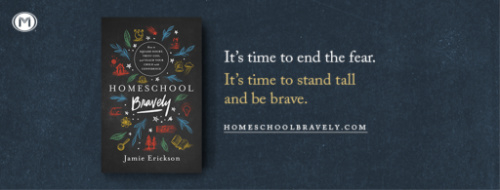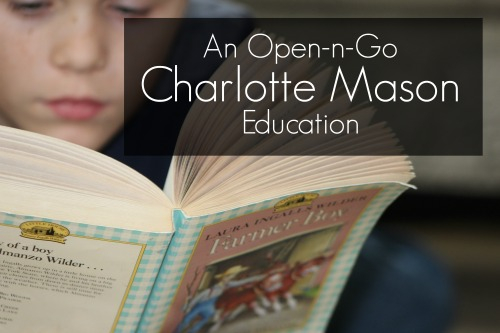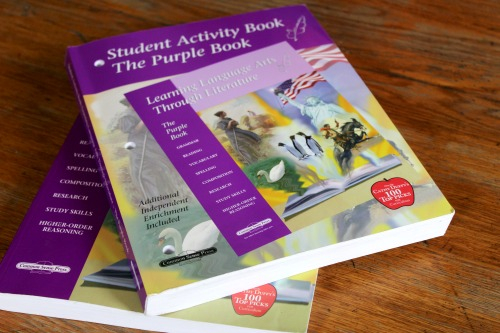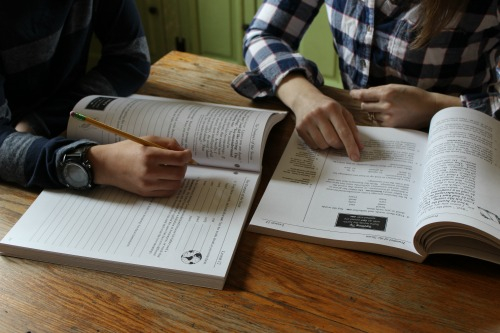

“Narrating is an art, like poetry-making or painting, because it is there in every child”s mind, waiting to be discovered, and is not the result of any process of disciplinary education.” ~Charlotte Mason A few months into the year when I watched my fifth grader floundering, going through the motions during language arts time with glossed-over eyes, I knew it was time for something else. I knew we needed a change. The program we were using was good. It just wasn”t good for him. As a traditional textbook approach to grammar and writing, it was lacking both the spark to keep him interested and the gentle, immersion of language and language skills found only in real books. (This post contains affiliate links. Please see my disclosure policy for full details.)He could do each day”s worksheet with ease. He could check all the boxes and underline all the right words. But in real-life, everyday writing, he struggled. He just couldn”t seem to transfer the grammar, mechanics, and sentence structure that he was learning in his book to the blank page of real writing.He was frustrated.I was frustrated.And if there”s one thing I”ve learned over the years, it”s that learning and tears never mix well.By mid-October, I was at quite an impasse and knew I had a decision to make. I could have him continue with the current program — plodding along with one begrudging step after another, OR I could count the textbook-style curriculum as a loss and find something that would meet his needs. I chose the latter.As in the past when I”ve needed a little gentle guidance, I looked to Charlotte Mason, the avant-garde, 20th-century educator who believed learning was a lifestyle that should be infused naturally, wholly, and gently.It was her opinion that children learn language skills best with daily exposure to quality literature and through a relaxed introduction of grammar by integrating vocabulary, narration, copywork, and composition into all other subjects.Quality literatureNarrationCopywork/DictationThis was her power-packed triad for language arts.With these three in mind, I went looking for a program to help my son. Now in truth, I didn”t necessarily need a “program.” With a wonderful home libraryat my disposal, I could, in theory, just use any and all of these to teach the basics of grammar, mechanics, and sentence structure, just like Miss Mason did so many years ago. But, as a momma of five with many plates to spin every day, I value my time too much to invent the wheel. I knew that a good “program,” while not necessary, was a luxury worth my investment.

At the urging of a friend who knew of my son”s struggles, I purchased Learning Language Arts Through Literature, The Purple Book (designed for fifth grade).
Since boldly making the big curriculum switch those many months ago, my son and I have slowly been working our way through grammar with the help of quality books, famous speeches, well-known poems, and stories.

Following Charlotte Mason”s tenets of education, the program uses an integrated approach to cover the following subject areas:grammarreadingspellingvocabularycompositionresearchstudy skillsreasoning
Each book is divided into units. While each unit contains elements of almost all of the subject areas, they each focus primarily on two to three.
While all of the daily lessons of the Purple Book feature excerpts from real literature, famous speeches, or noteworthy writings, there are four units specifically focused on entire books. Students are encouraged to read Farmer Boy by Laura Ingalls Wilder, The Trumpet of the Swan by E.B. White, Meet Addy by Connie Porter, and Caddie Woodlawn by Carol Ryrie Brink. Each book study unit includes vocabulary words, discussion questions, and other reading-related activities.
Grammar, mechanics, and spelling are taught primarily through copywork, dictation, and a handful of practical exercises. In the purple book, students analyze and dissect passages from the following:
Each Everyday Words section of the workbook lasts for a few weeks and is divided into several lessons. Each lesson focuses on one particular section of the book or poem being analyzed and is designed to be completed over the course of one week.
A typical week”s lesson begins with the introduction of a short literature passage. A student is encouraged to read it to himself, briefly discuss any unknown words with his teacher, and then listen as his teacher dictates a few sentences of the passage out loud for him to copy word-for-word.
In true dictation fashion, after he writes the excerpt, he checks his work against the original looking for mistakes in spelling, capitalization, and punctuation. He corrects his mistakes and gently learns the skills of self-editing.
Misspelled words are recorded for further practice throughout the week.In the following days, the passage is dissected and the student gets a chance to learn specific grammar, mechanics, and writing basics that are found in those particular paragraphs. At the end of the week, the passage is dictated and copied again and a student sees his improvement from the first dictation of that week to the last.For instance, in Lesson 12 of the purple book, students are asked to analyze the following excerpt fromThe Trumpet of the Swan.
These paragraphs show examples of homonyms and their dictionary definitions, dialogue and appropriate use of quotation marks, comparative and superlative adjectives, interjections, and prefixes. So, each day”s section of Lesson 12 focuses on one of these topics.
In this way, grammar basics are taught as-needed and therefore take on a more relevant role in a child”s education; unlike most traditional grammar programs which teach principles in a random, somewhat arbitrary fashion.
A one-to-two page review section is included after each Everyday Words unit in order that a student can review all of the skills he has learned throughout the entire unit.
Several practical units are dispersed throughout the book which eachfocus on one of three skills — oral presentation, research, or writing. Each process is broken down into smaller chunks throughout the week. A student works on one small portion each day and by the end of the week, he finds that he has written or recited an entire speech, poem, report, letter, etc.
In addition to the three main types of units, thePurple Bookalso contains assessments which are sporadically placed throughout the units and are designed to give the teacher a better understanding of the student”s progress. They are not tests. But like tests, they clearly show struggles and strengths.Short enrichment activities are also included at the end of some lessons. These are optional critical thinking and reasoning sections that include higher level word puzzles for developing analytical skills.
The very backbone of my entire homeschool has always been quality literature. I recognize that a reading-rich life enhances all areas of academics. Really well-chosen books not only nourish the mind, but they can also help shape the soul. In regards to teaching language arts, there is nothing that will drive a child to write better quite like good writing.
Sadly, so many language programs are centered around twaddly, basal readers and the contrived, non-sensical writing examples from make-believe children. But, if I aim to foster good writing…to build exemplary writing skills in my children, why would I want to use a shoddy blueprint? Why would I want to have the writing sample of one make-believe fifth grader be the writing standard for my fifth grader? Basal readers and textbook writing samples are boring, uninspiring, and mediocre at best.LLATL, on the other hand, recognizes that in order for a child to learn to produce GOOD writing, he has to first be introduced to GOOD writing. He has to study it, copy it, and model his own writing after it. The entire program begins and ends with wonderful literature.
A student book, a teacher”s manual, and a library card — that”s all you need to complete LLATL. There are no tests or additional manipulatives to purchase. You won”t need to carve out any extra time for teacher prep. You don”t even need to read a bunch of “front matter” to be able to figure out how to use the program. It is designed to be an open-n-go resource — a Charlotte Mason-for-the-busy-momma language course.
I took the leap so many months ago and switched programs because what I was using wasn”t working. My son”s language progress had plateaued. Since starting LLATL, I have seen so much improvement in his sentence structure, his use of basic mechanics, and most importantly his ability to self-edit as he writes. He is finally understanding the value of proper grammar and structure outside of “language class.”
There are four book units in the Purple Book each designed to be completed in a week. However, because my son has a mild neurological condition that sometimes inhibits his ability to read very quickly, he needs more time to complete these units. In addition, while I think that all of the books selected are exemplary and well-worth reading, I value delight-directed book selection — the kind that is driven by my child”s own natural interests, spiritual or academic needs, or growing curiosities. I find that books vetted with a child”s delights in mind are enjoyed so much more. So, while my son has done one entire book study and is soon to start the second one, he will not be assigned the third or fourth. I”ve used these book units as the flourish of his reading time, not the foundation of it.
My son”s spelling, like that of all of my other children, has really improved and blossomed while using an Orton-Gilligham based program. When I introduced LLATL to my eclectic homeschool day, I did so knowing that I”d have to find a way to weave the LLATL spelling words into our current spelling plan — In other words, I”d have to find a way to do both (without losing my mind!)And to my great surprise, it was an easy-peasy transition! Following the instructions which are given in the Purple Book, each week my son selects up to six words that he misspelled during the first round of copywork. He writes these down in his workbook. But instead of encouraging him to rewrite these each day in his LLATL book like the program suggests, I jot them down in my homeschool planner at the beginning of the week and use them as “real world” words in our spelling sessions each day.
One of my most favorite parts of homeschooling is creating a tailor-made education for each of my kids. Unlike a traditional classroom teacher who only has a student for one year and doesn”t have the full scope of what he has or has not mastered prior to that particular year, I can see the complete picture. I know what my son has learned, what he struggles with, and what he excels at. With that in mind, I see no need to belabor academic points or beat dead horses. I can slow down, speed up, or skip material as needed.
Because I knew that my son had a very in-depth look at Tall Tales last year in his previous grammar program, I chose to fly quickly through the Tall Tale grammar portion of the Purple Book and skip the Tall Tale writing portion altogether.
And since I”d rather use the “extra” of our days for project-based learning, I usually skip the enrichment sections entirely. It”s not that these sections are a waste of time or unnecessary. It”s just that he already gets wonderful lessons in reasoning and analysis in other parts of our homeschool. So for him, those sections are a bit redundant.
Before purchasingLearning Language Arts Through Literature, you should probably know the following about the Charlotte Mason approach and about the program in general:
The Charlotte Mason approach to learning is about endurance. It”s about slow-and-steady progress through gentle modeling. It focuses on quality, not quantity and recognizes that education is about nurturing the whole child, not about checking a box or passing a test. It is about creating an atmosphere of learning by spreading a feast of rich language before your child and allowing him to absorb it all at his own speed. With that in mind, the CM method of learning is not a quick fix. You won”t always see immediate, earth-shattering results. But over time and with consistency, you will create a lifetime of deep learning.
If you have used a traditional/textbook style language program in the past, the LLATL teacher”s manual might take some getting used to. Unlike other teacher”s manuals that replicate the student”s page completely and insert correct answers into the blanks, the LLATL manual abbreviates the student page a bit and places the correct answers in the margin of the text. The format is neither good or bad, it”s just different.
Learning Language Arts Through Literaturehas really bolstered my son”s overall attitude towards language arts because it has given sterile topics like subject-verb agreement and prepositions a relevance in his life. We have had so many lovely conversations about books while going through the program and have both come to see language time as “us time” each day. He”s always enjoyed creating stories. Now he”s finally enjoying writing them down.
For more information about LLATL, head to Common Sense Pressand be sure tofollow them on Facebook, Twitter,or Instagram.
More thoughts on a Charlotte Mason Education
5 MUST READ Articles for Charlotte Mason Homeschooling
Beginner”s Guide to Copywork
5 Days of Notebooking: A Notebooking PrimerCharlotte Mason Education Pinterest Board *I was given a complete set of Learning Language Arts Through Literature in exchange for a thorough review. All opinions expressed were true and completely my own. I am not responsible if your experiences vary.